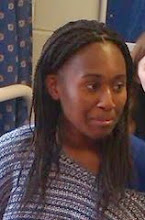

Front Cover
• For the masthead, I chose a plain san serif font in black because I believed that the sans serif font seemed modern and mysterious. I knew that the masthead was one of the first things they would see, and would set up their ideas of what the magazine was like.
• It comes from IM language, but I changed it to mean ‘Life. Mates. Funk. Acting Out.’, which summarises the priorities of the target audience. It shows how the magazine is like an extension of the average member of the target audience. It also shows that the internet is something subconsciously important in the average member’s day to day life.
• I chose a strapline that I felt described what the magazine would be to the target audience.
• I styled my headline roughly on an issue of Q which I studied. I created a stamp effect for the word ‘Exclusive’ because my audience would think that it looks cool and the connotation of a stamp is that this is so exclusive it’s top secret, it’s confidential.
• The lures were also styled in a similar way to the lures on the Q issue. I continued to use the same font of them giving them a shadow effect so they would seem to leap out of the page and attract the viewer’s attention.
• I tried to make the competition relevant to my audience and the magazine and so I purposely put it in the sweet spot.
• The models look like typical members of my target audience. They represent the target audience, which is something the target audience would find attractive because they would like to be on the cover of a magazine. They are smiling and have cheeky grins and one looks like very annoyed. They are full of character and this makes the magazine seem full of character.
Contents Page
• The features are continued from some of the lures on the front cover.
• In the editorial I tried to be more interactive, something I realised I didn’t do a lot in the preliminary task.
• The main image is also an image of some one who looks like a member of the target audience. He has an open-mouthed smile connoting confidence and happiness, something which very important to my target audience.
• I continued to use the same font I used in the front cover and some of the text effects, to bring a sense of continuity to the two pieces so they would seem part of the same magazine.
• The target audience are young adolescent boys between the ages of 16 and 19. They are in sixth form or about to start university and are students. They are still not quite matured.
• Stereotypical lifestyle of the audience is used to sell to the institutions so that they can be assured that the magazines will sell. It would therefore most likely be found in a newsagent.
• Using demographics, psychographics and behavioural variables, I have been able to build up a profile of the average student who would buy my magazine based on the look of my front cover.
• The average member of my audience is most likely a reformer and still full of aspirations. He intends to look sleek and sophisticated but end up looking like a kid.
• The price is a way of telling what kind of person would buy this magazine. They most likely are upper working class to middle class. They may even have a job to have money for they endless obsession with ‘swagger’ as in their need for the latest fashion. The magazine appeals to their need for surveillance and diversion.
• I have learnt about the importance quality of printing and how it affects the look of the product, up to date use of technology impresses audiences. The new printer made my work look very professional.
• All institutions involved like photographers, models, have to be given recognition, which is why I put it small print on the contents page. It is also important make sure websites are on front covers for reference, due to the increasing intertextuality of magazines these days.
• The way images are created set up, text is place and fonts used are affected by the type of technology you used.
• The software I used to create my front cover and contents page was Adobe Photoshop.
• I would improve my contents page and the continuity between it and the front cover. I know they double page spread has to combine the characteristics of the two so that all pieces seem part of one magazine.
